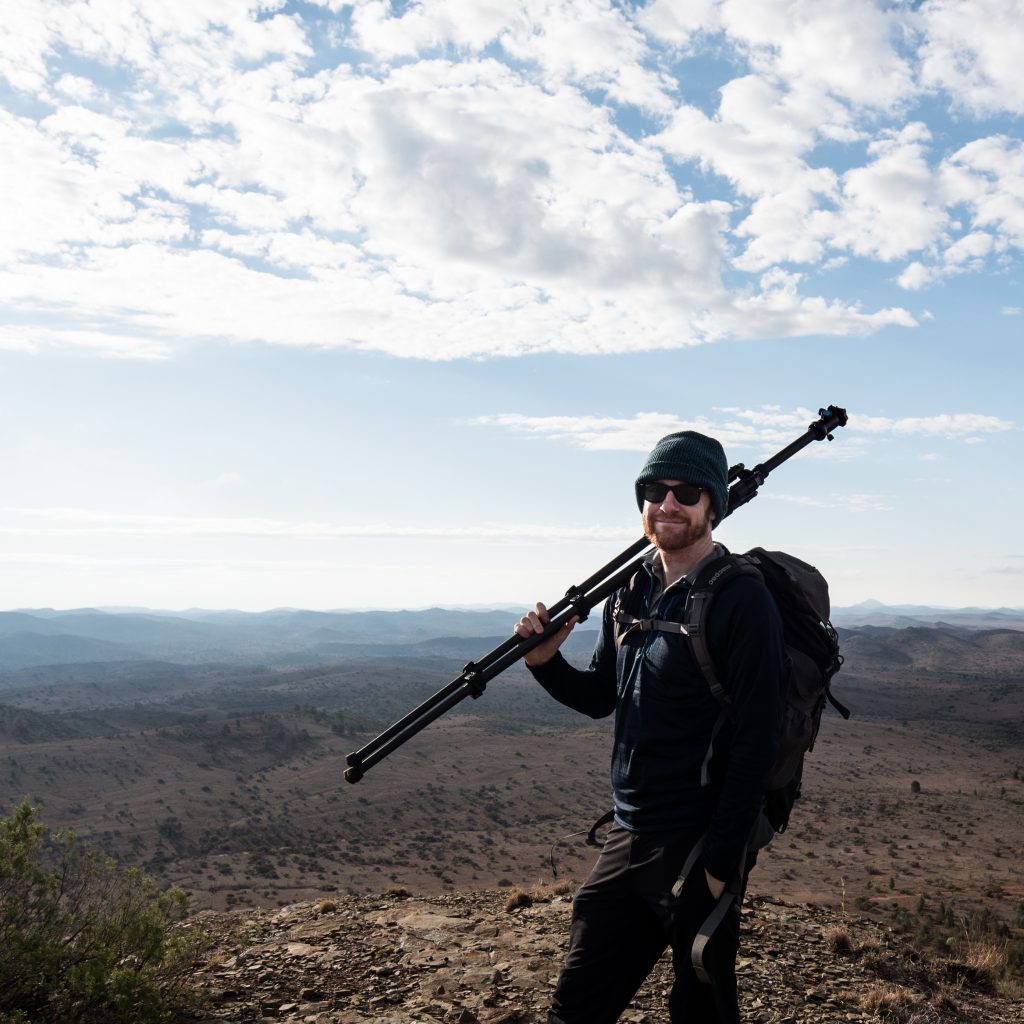
I did not have what you’d call a traditional entry into photography. My father and grandfather were casual photographers, but I didn’t randomly stumble upon their cameras as a toddler and find photography that way. Indeed, I did not buy my first DSLR until the age of 22.
What I did have from a very young age, however, was a love of camping in the Australian bush. My parents would take us into the desert and we would camp in beautiful, tree-lined gorges that occasionally had water in them (if we were very lucky).
I remember the peace, the serenity and the tranquillity of camping and being self- sufficient in the bush. When camping in remote areas, the world really is your backyard. Exploration wasn’t constrained by fences but by how much water I could carry on my back for a long hike. Looking back, it would have been hard not to become passionate about native plants, animals, hiking and geography.
Mental health
As I transitioned into adulthood, however, I became acutely aware of my deteriorating mental health.
At university, I was a terrible student. I skipped class frequently and had an immense fear of crowds and public speaking.
I was surrounded by people (many of them great people) on a daily basis, but I felt hopelessly directionless and alone.
I was unfulfilled, anxious and severely depressed.
But during those years, escaping into nature remained a relatively constant source of enjoyment and contentment.
When I got my own car and unrestricted driver’s license, this opened up a new world. I was free to explore the vast Australian continent. I would drive for days to the middle of nowhere and then drive back again. I poured over maps and had an insatiable curiosity to visit remote or beautiful places.
In fact, I’m not ashamed to admit that my Explore Australia road atlas was one of my most prized possessions.
Then, for reasons which still elude me to this day, I developed an interest in storms and storm chasing.
After a particularly stormy end to 2004, I realised I could combine my love of driving and open spaces with a burgeoning interest in the weather.
Buying my first camera
Happily, there were others who liked to chase storms too. Although in the glorious days before smartphones, storm chasing and storm photography were limited to those who were serious about their craft.
After joining a storm chasing forum I discovered many people used cameras to document their trips.
Makes sense, I thought.
Shortly thereafter I purchased my first camera; a cheap, almost disposable Pentax.
It was great! I took it with me storm chasing and would always wait for my developed film like a kid on Christmas morning.
Some years later I upgraded to a Canon 350D and everything went from there. I’m sure you can relate!
Photography and mindfulness
In the early years, photography and storm chasing were passions that consumed all of my mental focus and energy.
When I observed a storm rolling over the desert, I was watching the landscape and the sky intently. I was listening for thunder and smelling the glorious scent of petrichor – or rain mixing with dry soil.
I also thought about how I might be able to photograph the storm, anticipating its next move so I could stay a few steps ahead of it. When I had these thoughts, I simply didn’t have space for the destructive thoughts associated with anxiety and depression.
With the benefit of hindsight, storm chase photography was a form of primitive mindfulness for me – even if I wasn’t conscious of it at the time. My mind was open, relaxed and fully engaged on storm chasing.
Mindfulness photography has now been a constant in my life during the past 20 years as I have continued to fight anxiety and depression.
Today, I’m a voracious reader of anything related to mindfulness, spirituality and other eastern religions such as Taoism and how their teachings can be applied to photography or indeed, mental health. Although these philosophies pre-date the camera by thousands of years, they are highly relevant to the modern photographer.
I am forever grateful that I stumbled across photography and its value as a restorative, therapeutic hobby.
I would hate to think where I would be today without it. Most importantly, photography has allowed me to find my place in the world and to interpret it in my own way.
If you’re interested in learning more about how you might interpret the world using your photography, read my Start Here page or get in touch with me here.
I’m always up for a chat!
